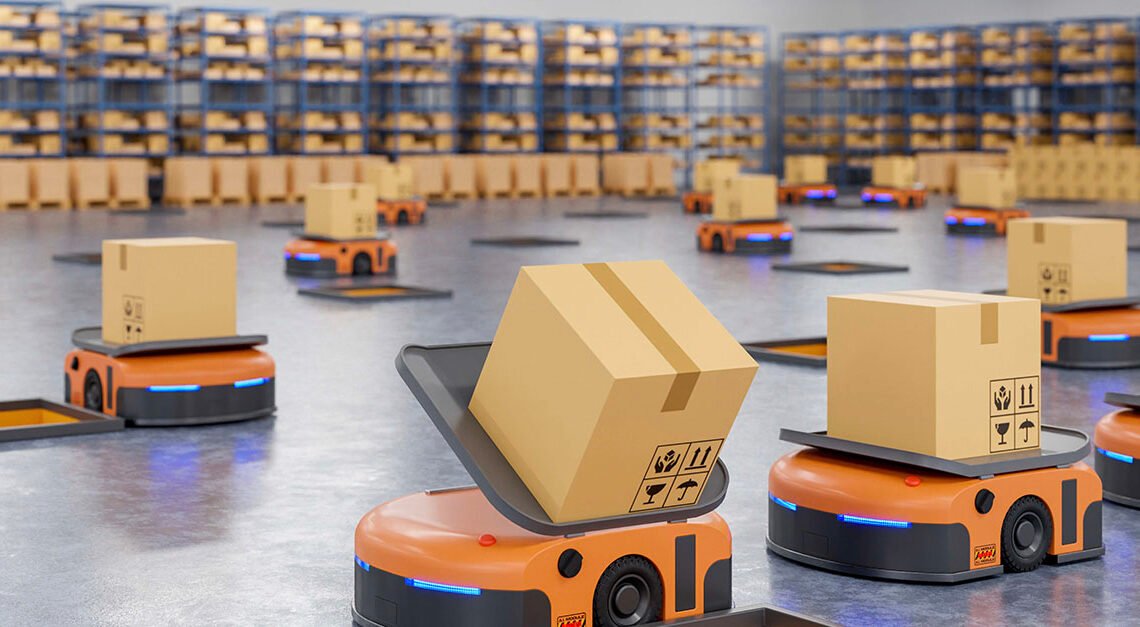Warehouse automation is no longer a futuristic option—it’s a business-critical strategy for warehouses seeking scalability, accuracy, and resilience. But automation can also come with a significant upfront investment. Whether you’re considering conveyor systems, AS/RS, robotics, or AI-driven analytics, the question remains: Is it worth it?
Understanding the return on investment (ROI) of warehouse automation goes far beyond calculating payback periods. It requires a deeper look at both the tangible and intangible benefits—and a realistic view of how the right systems can drive growth over time.
Here’s what companies should consider when evaluating the ROI of warehouse automation.
Start with your goals, not the price tag
Before analyzing costs, clarify what success looks like. Are you trying to:
- Increase throughput without hiring more labor?
- Reduce error rates and improve customer satisfaction?
- Expand into new markets without adding new facilities?
Clear goals make it easier to measure what matters. For example, if your primary challenge is missed SLAs or rising labor costs, then ROI should focus on improved delivery speed and labor efficiency—not just on equipment utilization.
Warehouse automation companies that offer consulting or simulation services can help you set realistic performance benchmarks before you spend a dime.
Calculate ROI across multiple layers
The most obvious ROI metric is financial: the amount of time it takes for automation to pay for itself. That usually involves comparing the total cost of ownership (equipment, software, implementation, training, maintenance) to the savings and gains achieved.
Here’s how to break it down:
Direct savings:
- Lower labor costs due to reduced manual handling
- Fewer picking, packing, or shipping errors
- Decreased product damage or shrinkage
- Reduced overtime and temporary staffing
Efficiency gains:
- Higher throughput per square foot
- Faster order cycle times
- Better space utilization
- Energy savings from smarter systems
Revenue impact:
- Increased capacity to take on more orders
- Fewer lost sales due to fulfillment issues
- Better customer retention through improved service levels
Many companies begin to see a return on warehouse automation within 12–24 months. But even before that, the operational improvements can be significant—and set the stage for long-term profitability.
Don’t overlook the hidden ROI
Not all returns are easy to quantify—but they still matter. Some of the most valuable benefits of warehouse automation show up in less obvious ways:
- Employee retention: Automation can reduce fatigue and injury risk, improving morale and reducing turnover
- Faster onboarding: With more standardized processes, new employees become productive sooner
- Improved decision-making: Real-time analytics enable proactive problem-solving
- Business continuity: Automated systems are less impacted by labor shortages, pandemics, or seasonal surges
When these benefits are combined, they create a compounding effect that strengthens your operation over time.
Tailor your investment to your business size
Not every warehouse needs full-scale automation. In fact, many warehouse automation companies offer scalable solutions that grow with you.
- Small to midsize operations might start with automated mobile robots (AMRs) or pick-to-light systems to improve picking speed
- Larger facilities may invest in conveyor systems, AS/RS, and warehouse execution systems (WES) to coordinate multiple layers of automation
- Multi-site networks can implement centralized dashboards and predictive analytics to improve visibility and resource allocation
The best ROI often comes from targeted automation—focusing on your most error-prone, time-consuming, or high-cost areas first.
Ask for real-world performance data
When evaluating vendors, ask for case studies or benchmarks from companies similar to yours. Look for data like:
- Time to payback
- Percentage increase in order accuracy
- Reduction in labor hours per order
- Increase in daily or hourly throughput
- Uptime and service reliability metrics
Many leading warehouse automation companies will provide simulation models or pilot programs to demonstrate ROI potential before full implementation. Don’t be afraid to push for data that reflects your industry and order profile.
Consider the cost of not automating
When budgets are tight, it’s easy to delay investment. But waiting too long can also be costly.
Manual processes may be cheaper upfront—but they often come with hidden expenses: inefficient layouts, rising labor costs, customer churn, and slow response times. As competitors invest in smarter warehouses, those who lag behind may find it harder to catch up.
Think of automation not just as a cost—but as a hedge against operational risk and a foundation for growth. Even incremental automation can create measurable gains.
Monitor ROI post-implementation
Once automation is in place, keep tracking your performance. Use KPIs like:
- Units per labor hour
- Order cycle time
- On-time shipment rates
- Downtime due to errors or system failures
- Returns or rework due to fulfillment issues
Work with your integration partner to fine-tune systems and address bottlenecks. The ROI of warehouse automation doesn’t stop after year one—it should continue improving as your systems adapt and your team gains experience.
Automation is an investment in your agility
The real ROI of warehouse automation isn’t just about saving money—it’s about positioning your business to scale, compete, and thrive. It’s the ability to fulfill more orders with fewer errors, respond to market changes quickly, and create a warehouse that runs with both precision and flexibility.
When you partner with experienced warehouse automation companies, you gain more than equipment—you gain strategic insight, long-term support, and a clear path to operational excellence.
In today’s market, the biggest risk isn’t automation. It’s standing still.







